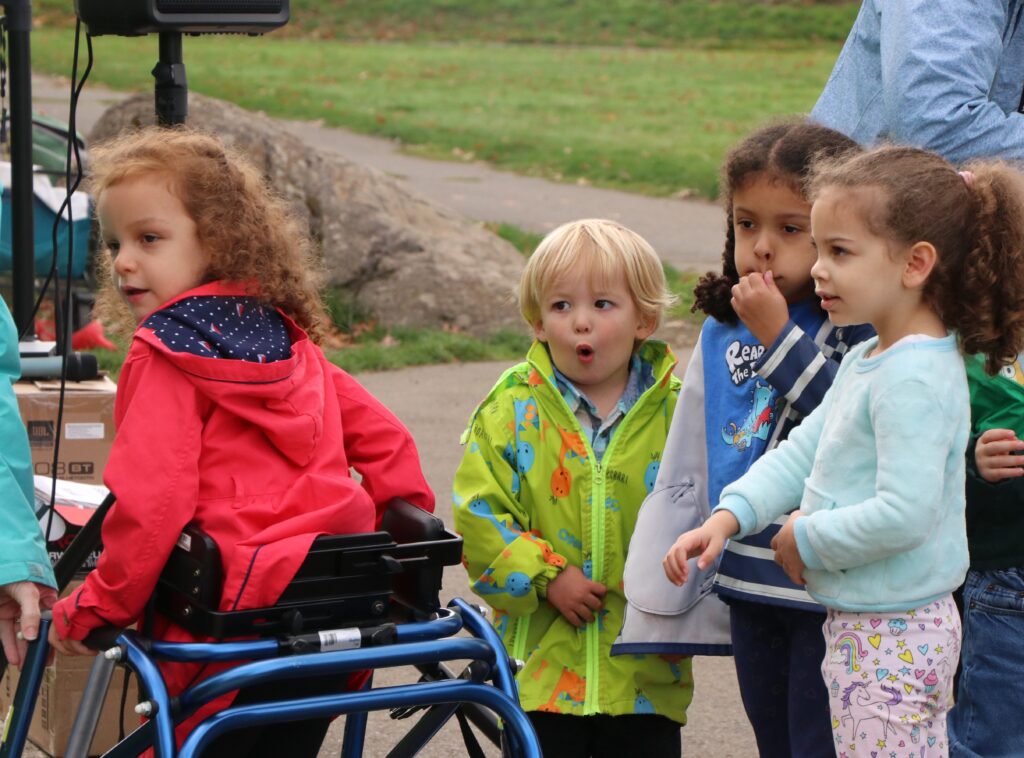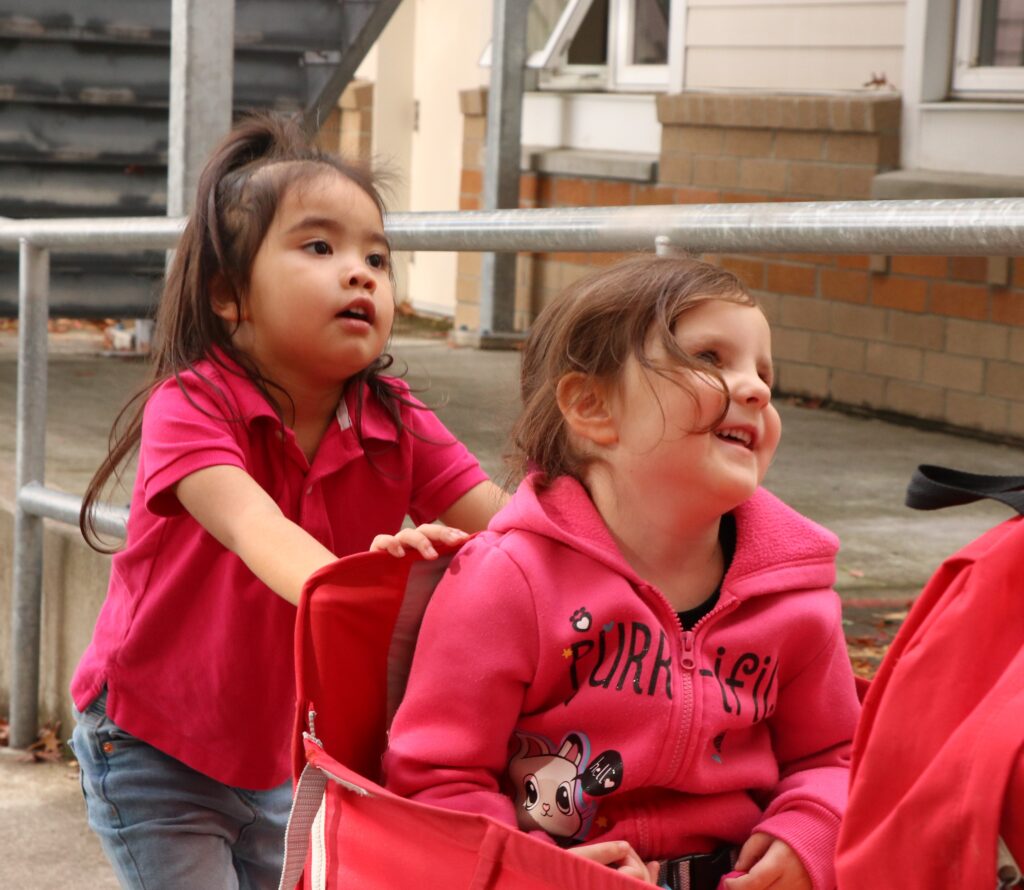
A Clackamas Education Service District preschool program mixes diverse-needs children with their typically developing peers for the benefit of all. (Photo by Jake Arnold, OSBA)
Preschool teacher Amy Paterson Sandie led a typical lesson on a recent morning, pointing to colorful pictures and questioning children seated in a semicircle.
In most ways, it appeared to be a standard classroom of laughing, singing, joyful kids. The biggest clue something was different was it had three educational assistants for a class of only 11.
Lessons were broken down into small steps, the activities carefully regimented into “routines within routines,” as Paterson Sandie describes them.
The teacher has to be systematic because her classroom includes typically developing children along with peers who require support plans. The new Clackamas Education Service District preschool program is built on research showing that all students gain from learning in a classroom that includes students with special needs.
“I see an environment where all kids feel welcome, all kids feel included,” said Sara Snow, the Clackamas ESD director of early intervention and childhood special education. “They are helping each other learn and grow.”
Roughly a third of the 20 total students in the morning and afternoon sessions have an Individualized Family Service Plan. The plans provide for specialized instructional services for children with developmental delays.
Research on inclusive classrooms dates to the early 1980s. Typically developing peers can be the best teachers and models for children with challenges, leading to significant development, according to the research. At the same time, typically developing children in inclusive classrooms show more social competence than same-age peers.
An inclusive classroom doesn’t mean less rigor.
Clackamas has consulted with the David Douglas School District, which has had inclusive classrooms for a decade. A 2019 report said all students who participated in David Douglas’ Cherry Park Elementary preschool hit kindergarten benchmarks in 2018 and all but one in 2019. The school has also seen a reduction in behavioral referrals since the inclusive classroom started, according to Jeanett Sealy, the David Douglas Early Intervention/Early Childhood Special Education program director.
Clackamas’ two-year pilot program is located at North Clackamas School District’s Mount Scott Elementary School in Happy Valley, a Portland suburb. Snow said the ESD hopes to expand inclusive programs to other area districts.
More children are in the process of joining the program. The process includes evaluations and home visits to make sure the child will thrive in an inclusive environment.
Clackamas ESD Board Chair Greg McKenzie said the inclusive program exemplifies the innovation and creativity board members want from administrators.
“We encourage them to explore new ways to provide services to all our families,” he said.
The curriculum is designed to help students with developmental disabilities to adopt skills such as sharing or getting someone’s attention while also moving all children toward kindergarten readiness.
Still, parents worry whether their children will get everything they need.
Katelyn Hosseini’s daughter has cerebral palsy and autism. Hosseini was afraid Avery might not receive the specialized support she requires, but so far her daughter seems to be doing well. At the start of the year, Avery only wanted to look at books in a quiet corner but now she is happily interacting with the children and adults.
On that recent morning, Hosseini’s daughter was bursting with excitement to start the day. Sometimes during class she would start to become upset, but an assistant would prompt her to breathe and she would quickly calm back down.
Hosseini’s daughter requires a lot of personal assistance, but the class does not offer one-on-one assistants. Instead, all the education assistants in the room are versed in every child’s needs so they can step in where needed. Every child also had a piece of Paterson Sandie’s individual attention as needed.
Sandra Winfree said her son was asked to leave another program because of autistic behaviors and trouble with a language delay. She said the educators in the Clackamas program, trained to handle an inclusive classroom, “see him for who he is, a sweet kid who wants to help.”
On the recent morning, Wesley happily moved around the classroom, playing and learning alongside the other children.
“I just love that he is able to kind of be a kid,” Winfree said.
Parent Jessica Mullins has a 7-year-old with a developmental difference, so she understands the fears of parents of children with special needs. But she still worried her 4-year-old daughter, who is developing typically, wouldn’t learn in the inclusive classroom what she needed to be ready for kindergarten. Mullins said Emelia is being academically challenged but is also having lots of fun and making friends.
“For now, I think it is a great experience for her to hang out with kids with disabilities and kids without,” Mullins said.

The children in a new Clackamas ESD inclusive preschool program learn to work together and accept each other’s differences. (Photo by Jake Arnold, OSBA)
The teacher guided the children to share toys, play games together and ask each other for help. When the children lined up to come in from recess, a child put her hand on Avery’s hand on her walker.
A child with a mobility challenge climbed in a wagon to be pulled by an education assistant. Her line buddy helped push the wagon, occasionally jumping on for a ride too.
The children sang “We are walking, we are rolling all together” as they headed back into the classroom.
– Jake Arnold, OSBA
[email protected]